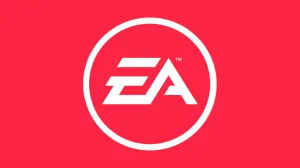
For more than a century, acclaimed horror and sci-fi author H.P. Lovecraft has been a favorite among genre enthusiasts, yet the terrors he depicts rarely translate well into other media, with the rare exception of Cthulhu popping up in an assortment of tales inspired by the writer. Joe Hill has been frightening audiences for more than a decade with novels, short stories, and graphic novels, and his collaboration with artist Stuart Immonen, Plunge, appears to be honoring the accomplishments of Lovecraft, with a heaping helping of John Carpenter tossed in. Plunge #1 offers a debut issue offering the aquatic nightmare that pop culture so desperately needs right now.
Videos by ComicBook.com
More than 40 years after its disappearance, a research vessel washes ashore and begins to transmit a distress signal, which coincides with automated protocols triggered by natural occurrences. To learn more about the vessel, a salvage crew is enlisted to investigate the ship, earning a fee that sounds too good to be true if it weren’t for the many red flags already surrounding the mission. Unfortunately, a series of bizarre animal behaviors across the globe might confirm that there’s nothing natural at all about this disaster.
In the opening pages of the comic, readers witness a man playing fetch with his dog on a beach, only to discover a group of squid has washed ashore, hinting at even more bizarre events about to unfold. Immonen masterfully frightens us with the sheer scale of the beasts, as our eyes travel from the top of the page to the bottom in order to fully realize just how monstrous these animals are—inspiring us to imagine what sort of creature could cause such carnage. It’s clear almost immediately that the creators won’t be delivering a story about any threat from the natural world, but something that will surely shock us. Hill and Immonen capture our attention in two pages more effectively than some books achieve over the course of an entire issue, frustrating the reader with how easily and simply they can draw us into a new narrative.
Hill and Immonen’s contributions to the book aren’t the only things making Plunge #1 a big success, as colorist Dave Stewart manages to find the perfect blend of natural and unsettling colors to craft the series’ atmosphere. Mostly through the use of blues and greens, the colors in each panel feel reminiscent of aquatic colors, though they are used in jarring and unexpected ways to convey that a paradoxical event could be unfolding. While we’ve seen greenish water before, the ocean has surely never looked like this at this depth or in this environment, affecting the reader on an almost imperceptible level.
After the opening pages, readers are given some standard exposition that unites a group of ragtag characters with funding from a mysterious corporation. As the book continues, its influences become more evident, though it’s unclear which of these are meant to be direct references and which should be simply enjoyed as horror-themed Easter eggs.
When we meet the captain of our salvaging vessel—his name is Captain Carpenter—so when you’re dealing with a team of researchers investigating a mysterious occurrence in a frigid environment, we can’t help but think of the John Carpenter’s The Thing. Heightening those similarities further is the captain’s resemblance to the character Clark from that same film, while another member of the salvaging team happens to be named “Clark.” In the book’s opening sequence, the dog looks like the first dog seen in The Thing, while an innocent beachside stroll that unearths a mysterious plot point is equally reminiscent of The Fog. These details seem too blatant to merely be an accident, though they are used in service of the story without being obviously injected merely to score points with horror fans.
The Lovecraftian influence comes from the sheer scale of the potential threat in Plunge, as the author is most often connected with concepts of cosmic horror, refusing to be limited to earthbound antagonists. Another key component of many of his tales is that, rather than unfolding in real-time, they detail horrific occurrences after the fact; the events are normally connected to researchers and scientists who don’t react with the same fear to bizarre events as a civilian would. Plunge embraces not just the scale, but the notion that this salvage team has seen their fair share of weirdness in the open ocean and lets the readers know they will be at least somewhat braced for what they are set to uncover.
Plunge is borrowing from some of the horror genre’s greatest visionaries in a world of aquatic terror and blending them together for a chilling experience. The series’ biggest drawback is only that, after one issue, the influences seem too obvious, risking a descent into formulaic territory. Given the experience of Hill and Immonen, however, we won’t be surprised if Plunge sets the standard for horror comics that explore the darkest parts of the planet, both literally and figuratively.
Published by DC Comics
On February 19, 2020
Written by Joe Hill
Art by Stuart Immonen
Colors by Dave Stewart
Letters by Deron Bennet
Cover by Jeremy Wilson








